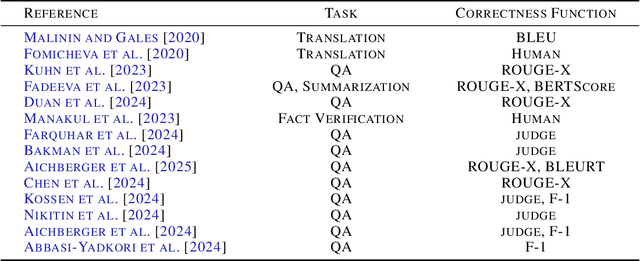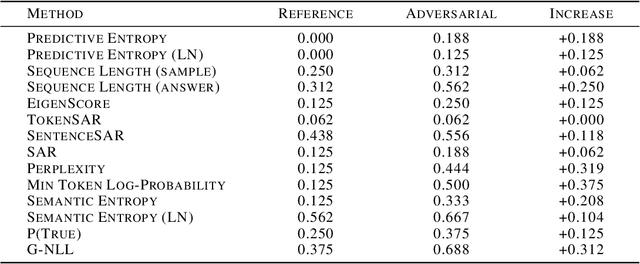Object Detection
Object detection is a computer vision task in which the goal is to detect and locate objects of interest in an image or video. The task involves identifying the position and boundaries of objects in an image, and classifying the objects into different categories. It forms a crucial part of vision recognition, alongside image classification and retrieval.
Papers and Code
Unlocking Vision-Language Models for Video Anomaly Detection via Fine-Grained Prompting
Oct 02, 2025Prompting has emerged as a practical way to adapt frozen vision-language models (VLMs) for video anomaly detection (VAD). Yet, existing prompts are often overly abstract, overlooking the fine-grained human-object interactions or action semantics that define complex anomalies in surveillance videos. We propose ASK-Hint, a structured prompting framework that leverages action-centric knowledge to elicit more accurate and interpretable reasoning from frozen VLMs. Our approach organizes prompts into semantically coherent groups (e.g. violence, property crimes, public safety) and formulates fine-grained guiding questions that align model predictions with discriminative visual cues. Extensive experiments on UCF-Crime and XD-Violence show that ASK-Hint consistently improves AUC over prior baselines, achieving state-of-the-art performance compared to both fine-tuned and training-free methods. Beyond accuracy, our framework provides interpretable reasoning traces towards anomaly and demonstrates strong generalization across datasets and VLM backbones. These results highlight the critical role of prompt granularity and establish ASK-Hint as a new training-free and generalizable solution for explainable video anomaly detection.
Modeling the Multivariate Relationship with Contextualized Representations for Effective Human-Object Interaction Detection
Sep 16, 2025Human-Object Interaction (HOI) detection aims to simultaneously localize human-object pairs and recognize their interactions. While recent two-stage approaches have made significant progress, they still face challenges due to incomplete context modeling. In this work, we introduce a Contextualized Representation Learning Network that integrates both affordance-guided reasoning and contextual prompts with visual cues to better capture complex interactions. We enhance the conventional HOI detection framework by expanding it beyond simple human-object pairs to include multivariate relationships involving auxiliary entities like tools. Specifically, we explicitly model the functional role (affordance) of these auxiliary objects through triplet structures <human, tool, object>. This enables our model to identify tool-dependent interactions such as 'filling'. Furthermore, the learnable prompt is enriched with instance categories and subsequently integrated with contextual visual features using an attention mechanism. This process aligns language with image content at both global and regional levels. These contextualized representations equip the model with enriched relational cues for more reliable reasoning over complex, context-dependent interactions. Our proposed method demonstrates superior performance on both the HICO-Det and V-COCO datasets in most scenarios. Codes will be released upon acceptance.
Dark-ISP: Enhancing RAW Image Processing for Low-Light Object Detection
Sep 11, 2025



Low-light Object detection is crucial for many real-world applications but remains challenging due to degraded image quality. While recent studies have shown that RAW images offer superior potential over RGB images, existing approaches either use RAW-RGB images with information loss or employ complex frameworks. To address these, we propose a lightweight and self-adaptive Image Signal Processing (ISP) plugin, Dark-ISP, which directly processes Bayer RAW images in dark environments, enabling seamless end-to-end training for object detection. Our key innovations are: (1) We deconstruct conventional ISP pipelines into sequential linear (sensor calibration) and nonlinear (tone mapping) sub-modules, recasting them as differentiable components optimized through task-driven losses. Each module is equipped with content-aware adaptability and physics-informed priors, enabling automatic RAW-to-RGB conversion aligned with detection objectives. (2) By exploiting the ISP pipeline's intrinsic cascade structure, we devise a Self-Boost mechanism that facilitates cooperation between sub-modules. Through extensive experiments on three RAW image datasets, we demonstrate that our method outperforms state-of-the-art RGB- and RAW-based detection approaches, achieving superior results with minimal parameters in challenging low-light environments.
* 11 pages, 6 figures, conference
Data Augmentation via Latent Diffusion Models for Detecting Smell-Related Objects in Historical Artworks
Sep 18, 2025Finding smell references in historic artworks is a challenging problem. Beyond artwork-specific challenges such as stylistic variations, their recognition demands exceptionally detailed annotation classes, resulting in annotation sparsity and extreme class imbalance. In this work, we explore the potential of synthetic data generation to alleviate these issues and enable accurate detection of smell-related objects. We evaluate several diffusion-based augmentation strategies and demonstrate that incorporating synthetic data into model training can improve detection performance. Our findings suggest that leveraging the large-scale pretraining of diffusion models offers a promising approach for improving detection accuracy, particularly in niche applications where annotations are scarce and costly to obtain. Furthermore, the proposed approach proves to be effective even with relatively small amounts of data, and scaling it up provides high potential for further enhancements.
Explicit Multimodal Graph Modeling for Human-Object Interaction Detection
Sep 16, 2025Transformer-based methods have recently become the prevailing approach for Human-Object Interaction (HOI) detection. However, the Transformer architecture does not explicitly model the relational structures inherent in HOI detection, which impedes the recognition of interactions. In contrast, Graph Neural Networks (GNNs) are inherently better suited for this task, as they explicitly model the relationships between human-object pairs. Therefore, in this paper, we propose \textbf{M}ultimodal \textbf{G}raph \textbf{N}etwork \textbf{M}odeling (MGNM) that leverages GNN-based relational structures to enhance HOI detection. Specifically, we design a multimodal graph network framework that explicitly models the HOI task in a four-stage graph structure. Furthermore, we introduce a multi-level feature interaction mechanism within our graph network. This mechanism leverages multi-level vision and language features to enhance information propagation across human-object pairs. Consequently, our proposed MGNM achieves state-of-the-art performance on two widely used benchmarks: HICO-DET and V-COCO. Moreover, when integrated with a more advanced object detector, our method demonstrates a significant performance gain and maintains an effective balance between rare and non-rare classes.
Joint Optimization of Speaker and Spoof Detectors for Spoofing-Robust Automatic Speaker Verification
Oct 02, 2025Spoofing-robust speaker verification (SASV) combines the tasks of speaker and spoof detection to authenticate speakers under adversarial settings. Many SASV systems rely on fusion of speaker and spoof cues at embedding, score or decision levels, based on independently trained subsystems. In this study, we respect similar modularity of the two subsystems, by integrating their outputs using trainable back-end classifiers. In particular, we explore various approaches for directly optimizing the back-end for the recently-proposed SASV performance metric (a-DCF) as a training objective. Our experiments on the ASVspoof 5 dataset demonstrate two important findings: (i) nonlinear score fusion consistently improves a-DCF over linear fusion, and (ii) the combination of weighted cosine scoring for speaker detection with SSL-AASIST for spoof detection achieves state-of-the-art performance, reducing min a-DCF to 0.196 and SPF-EER to 7.6%. These contributions highlight the importance of modular design, calibrated integration, and task-aligned optimization for advancing robust and interpretable SASV systems.
A Structured Review of Underwater Object Detection Challenges and Solutions: From Traditional to Large Vision Language Models
Sep 10, 2025Underwater object detection (UOD) is vital to diverse marine applications, including oceanographic research, underwater robotics, and marine conservation. However, UOD faces numerous challenges that compromise its performance. Over the years, various methods have been proposed to address these issues, but they often fail to fully capture the complexities of underwater environments. This review systematically categorizes UOD challenges into five key areas: Image quality degradation, target-related issues, data-related challenges, computational and processing constraints, and limitations in detection methodologies. To address these challenges, we analyze the progression from traditional image processing and object detection techniques to modern approaches. Additionally, we explore the potential of large vision-language models (LVLMs) in UOD, leveraging their multi-modal capabilities demonstrated in other domains. We also present case studies, including synthetic dataset generation using DALL-E 3 and fine-tuning Florence-2 LVLM for UOD. This review identifies three key insights: (i) Current UOD methods are insufficient to fully address challenges like image degradation and small object detection in dynamic underwater environments. (ii) Synthetic data generation using LVLMs shows potential for augmenting datasets but requires further refinement to ensure realism and applicability. (iii) LVLMs hold significant promise for UOD, but their real-time application remains under-explored, requiring further research on optimization techniques.
Addressing Pitfalls in the Evaluation of Uncertainty Estimation Methods for Natural Language Generation
Oct 02, 2025



Hallucinations are a common issue that undermine the reliability of large language models (LLMs). Recent studies have identified a specific subset of hallucinations, known as confabulations, which arise due to predictive uncertainty of LLMs. To detect confabulations, various methods for estimating predictive uncertainty in natural language generation (NLG) have been developed. These methods are typically evaluated by correlating uncertainty estimates with the correctness of generated text, with question-answering (QA) datasets serving as the standard benchmark. However, commonly used approximate correctness functions have substantial disagreement between each other and, consequently, in the ranking of the uncertainty estimation methods. This allows one to inflate the apparent performance of uncertainty estimation methods. We propose using several alternative risk indicators for risk correlation experiments that improve robustness of empirical assessment of UE algorithms for NLG. For QA tasks, we show that marginalizing over multiple LLM-as-a-judge variants leads to reducing the evaluation biases. Furthermore, we explore structured tasks as well as out of distribution and perturbation detection tasks which provide robust and controllable risk indicators. Finally, we propose to use an Elo rating of uncertainty estimation methods to give an objective summarization over extensive evaluation settings.
UNIV: Unified Foundation Model for Infrared and Visible Modalities
Sep 19, 2025The demand for joint RGB-visible and infrared perception is growing rapidly, particularly to achieve robust performance under diverse weather conditions. Although pre-trained models for RGB-visible and infrared data excel in their respective domains, they often underperform in multimodal scenarios, such as autonomous vehicles equipped with both sensors. To address this challenge, we propose a biologically inspired UNified foundation model for Infrared and Visible modalities (UNIV), featuring two key innovations. First, we introduce Patch-wise Cross-modality Contrastive Learning (PCCL), an attention-guided distillation framework that mimics retinal horizontal cells' lateral inhibition, which enables effective cross-modal feature alignment while remaining compatible with any transformer-based architecture. Second, our dual-knowledge preservation mechanism emulates the retina's bipolar cell signal routing - combining LoRA adapters (2% added parameters) with synchronous distillation to prevent catastrophic forgetting, thereby replicating the retina's photopic (cone-driven) and scotopic (rod-driven) functionality. To support cross-modal learning, we introduce the MVIP dataset, the most comprehensive visible-infrared benchmark to date. It contains 98,992 precisely aligned image pairs spanning diverse scenarios. Extensive experiments demonstrate UNIV's superior performance on infrared tasks (+1.7 mIoU in semantic segmentation and +0.7 mAP in object detection) while maintaining 99%+ of the baseline performance on visible RGB tasks. Our code is available at https://github.com/fangyuanmao/UNIV.
An Exploratory Study on Abstract Images and Visual Representations Learned from Them
Sep 17, 2025Imagine living in a world composed solely of primitive shapes, could you still recognise familiar objects? Recent studies have shown that abstract images-constructed by primitive shapes-can indeed convey visual semantic information to deep learning models. However, representations obtained from such images often fall short compared to those derived from traditional raster images. In this paper, we study the reasons behind this performance gap and investigate how much high-level semantic content can be captured at different abstraction levels. To this end, we introduce the Hierarchical Abstraction Image Dataset (HAID), a novel data collection that comprises abstract images generated from normal raster images at multiple levels of abstraction. We then train and evaluate conventional vision systems on HAID across various tasks including classification, segmentation, and object detection, providing a comprehensive study between rasterised and abstract image representations. We also discuss if the abstract image can be considered as a potentially effective format for conveying visual semantic information and contributing to vision tasks.
 Add to Chrome
Add to Chrome Add to Firefox
Add to Firefox Add to Edge
Add to Edge